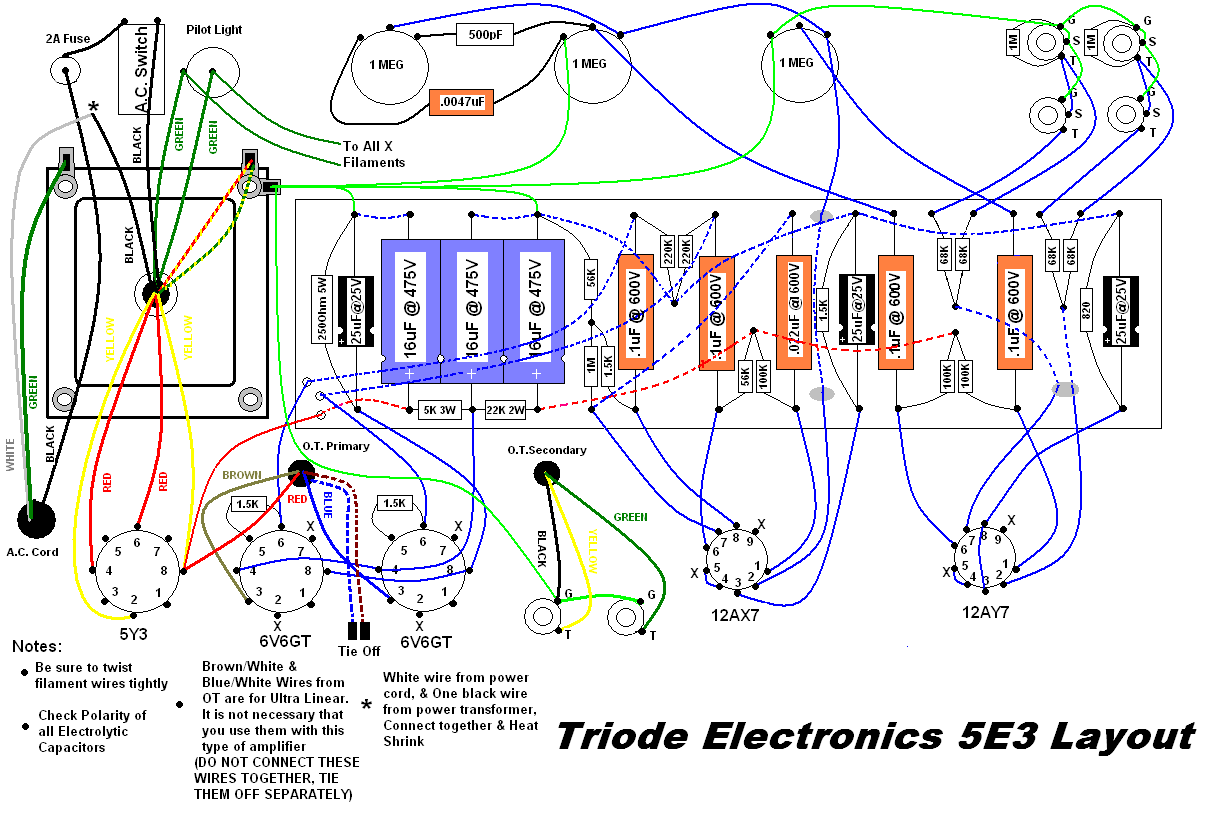Hi all,
finally my finished my 5e3 kit (from triode electronics but with an extra carling switched wired in using the the ceriatone 5e3 diagram), my first build, tried to power it up for the first time (was so excited to get proper tweed tone as i've never owned any tube amp before), into an 8 ohms celestion vintage 30, all tubes appeared to heat up nicely with an orange glow, and as soon i flipped the standby switch a loud hum came through the speaker. I plugged my guitar into each input to see whether it was background noise or not, but there was no sound from the guitar at all; just loud, uninterrupted humming. Ive checked all my wiring so many times now and cannot find anything wrong.
Here is the wiring diagram i was given for the primary transformer, I live in england so I needed to wire it for a 240V input.

The best I could understand the instructions at the bottom was to feed the live 240v into the white, and the neutral to the black/white, and then join the white/black and black wires. Bit I'm still unsure, so i think there's this could be the problem. Emailed triode to get some help but its been a week and a half and still no response.
some pics:






Singed the the plastic coating of the large capacitors a little as I soldered my circuit board, will this affect anything?
I'm armed with a multimeter but not sure what size voltages are supposed to be read from where as triode only gave me the diagram above and a wiring diagram. If anyone could give us a clue as to what to do, it would be greatly appreciated.
thanks in advance, tris
p.s. sorry for the essay, thought i better give as much detail as possible.
finally my finished my 5e3 kit (from triode electronics but with an extra carling switched wired in using the the ceriatone 5e3 diagram), my first build, tried to power it up for the first time (was so excited to get proper tweed tone as i've never owned any tube amp before), into an 8 ohms celestion vintage 30, all tubes appeared to heat up nicely with an orange glow, and as soon i flipped the standby switch a loud hum came through the speaker. I plugged my guitar into each input to see whether it was background noise or not, but there was no sound from the guitar at all; just loud, uninterrupted humming. Ive checked all my wiring so many times now and cannot find anything wrong.
Here is the wiring diagram i was given for the primary transformer, I live in england so I needed to wire it for a 240V input.

The best I could understand the instructions at the bottom was to feed the live 240v into the white, and the neutral to the black/white, and then join the white/black and black wires. Bit I'm still unsure, so i think there's this could be the problem. Emailed triode to get some help but its been a week and a half and still no response.
some pics:






Singed the the plastic coating of the large capacitors a little as I soldered my circuit board, will this affect anything?
I'm armed with a multimeter but not sure what size voltages are supposed to be read from where as triode only gave me the diagram above and a wiring diagram. If anyone could give us a clue as to what to do, it would be greatly appreciated.
thanks in advance, tris
p.s. sorry for the essay, thought i better give as much detail as possible.


Comment